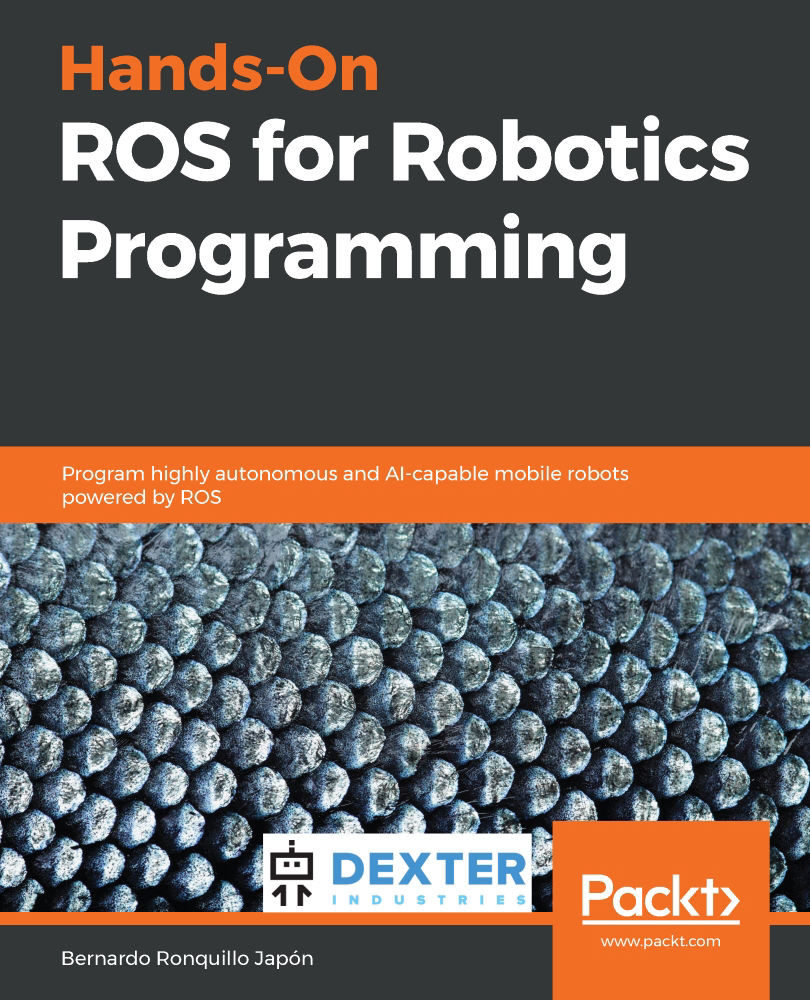This section is devoted to explaining an easy ROS example with GoPiGo3. By doing this, we can put our robot to work quickly so that, in later sections, we can deal with ROS commands and tools in a practical way, applying such commands and understanding what they do.
This very simple example is based on the distance sensor in GoPiGo3. It consists of publishing sensor readings and accessing them from other ROS nodes.



































































